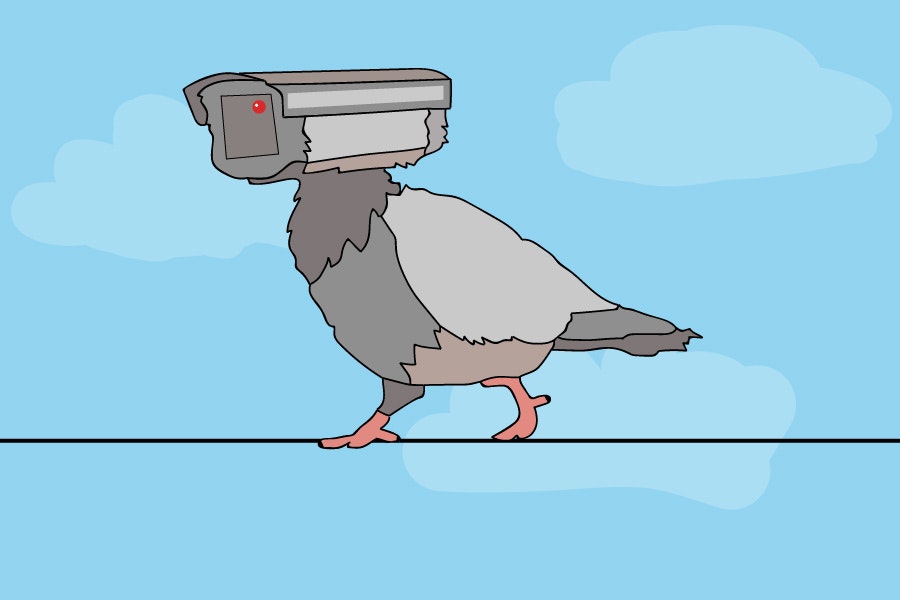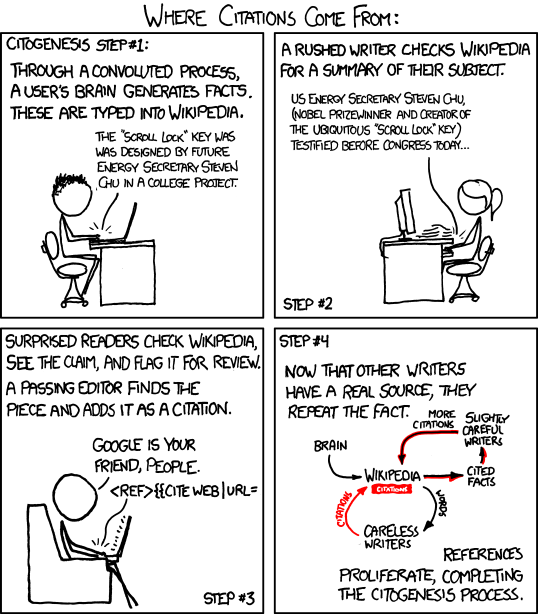Are birds real?
Consumerism has fueled our insane appetite for materialistic things, both figuratively and literally. Food Psychologist Brian Wansink’s revolutionary book ‘Mindless Eating: Why we eat more than we think’ highlights the present culture’s way of forcing us to eat more than we normally would. His findings supported by his strong academic research bring out the correlation between plate sizes and appetite and the subtle pushes that encourage mindless eating1.

None of the above is true. Prof’s Wansink’s paper about this study was retracted after it was found out that he fudged the data2. You might not be entirely at fault for believing it. He even won an Ig Nobel for the same. I just used studies that have been disproved or retracted. Most people don’t read the references or the whole paper. The presence of an inline citation or bibliography at the end of an article gives it an aura of credibility. We assume what is said to be true if it has references at the end of the line. For a general or long-form article, can the reader be expected to go through all the references and read a 20-page study about a topic he is not an expert on and decide about its accuracy or validity. Or have to opine upon whether the survey design for the study was correct or the results statistically significant?
What part of the burden of proof falls on the reader? Can he trust a news outlet or a research journal to be thorough with what they are publishing? How does this trust build up? Mostly, it is based on the past track record of the outlets. People believe stuff thinking if it would be false, someone else will do the due diligence and report back. But what if no one does and as time passes, the slightly dubious theory or finding is taken as a fact? You might have read to ‘social distance’ in public places, to keep at least 6 feet apart, a thousand times at the airport, shopping malls heck even in an UBER… god knows how. But where did this number 6 feet come from? A very rudimentary guess I had was that this might be the maximum distance droplets can travel; Cause 6 is a very specific number to have. If it was arbitrary, then why not 5? It sounds better. Or better, why not use big boy standard units like meters and not random carrot lengths but that is a fight for another time. Turns out there is a reason and it precariously depends on what is an aerosol and can spread freely in indoor environments. It all hinges on the size classification of a particle as an aerosol or a droplet. WHO, CDC and all experts took for granted a limit that particles above 5 microns are not aerosols and cannot linger in the air for longer and lead to infections. But a researcher found out in 2020 that the 5 micron limit was based on a faulty premise that misinterpreted a study of tuberculosis patients in the 1960s3. The earliest research on aerosol transmission was done for TB and the results were generalized. But TB is different as the bacteria that causes it were mostly less than 5 microns in size and only infected human cells deep in the lungs. This caveat was forgotten in the years to come. After this new finding was reported, a few pushbacks later it was accepted by the WHO and CDC that covid can spread by particles greater than 5 microns as aerosols and large droplets over longer distances and the guidelines were updated. (The current consensus is that though COVID-19 can spread through particles suspended in air long after the original source is gone, but most of the transmission happens via close proximity of less than 1m between people.)

Katie Randall, the grad student that found this, specializes in scholarly citation tracking. It took her a lot of elbow grease to figure this out. A casual reader of a news bite can thus be forgiven for believing the news at face value, for he can’t possibly find out its accuracy. If scientific reports can be this subjective and not entirely black and white, what about other reports? There was a recent report that the sex ratio in India is now positive or take even the GST numbers released by the finance ministry. Is it possible that these numbers are fudged or manipulated to fit some narrative? If there is no concrete way to know this about public government surveys, what can be said about private ones?
Some things are easier to believe, for others, we have to depend on subject experts. It’s been the human way to outsource as much stuff as possible. It seems a good way too. Leave the more complicated nuances to the people in the relevant fields. The ‘someone will correct it if it is wrong’ approach works until it doesn’t. It doesn’t matter much for trivial stuff, but can have huge complications for stuff that matters. I haven’t figured out a way out of this and am just posing questions here, but I will leave you with a mental exercise. Read this excerpt below along with the reference and try to figure out if it is true, an outright lie or something that has already been disproved. If we do this work for all news sources we encounter and especially the ones we share with others, our job as a reader is done.
Can Jade amulets prevent COVID-19? This peer-reviewed paper published in an Elsevier Journal by a University of Pittsburg professor thinks so. The actual title of the paper is: Can Traditional Chinese Medicine provide insights into controlling the COVID-19 pandemic: Serpentinization-induced litho spheric long-wavelength magnetic anomalies in Proterozoic bedrocks in a weakened geomagnetic field mediate the aberrant transformation of biogenic molecules in COVID-19 via magnetic catalysis.
Title Trivia- ‘Birds aren’t real’ is a satirical conspiracy movement to throw light on the current environment of misinformation spreading rapidly. Read more about it here.





Comments